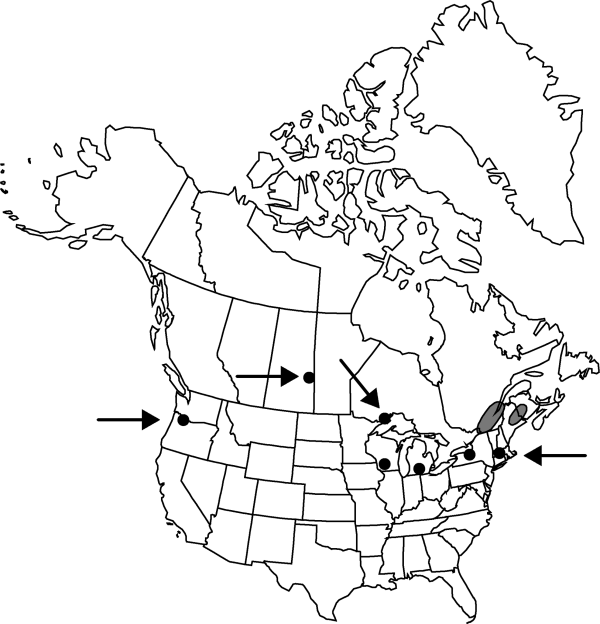familyChenopodiaceae
genusChenopodium
subgenusChenopodium subg. Chenopodium
subsectionChenopodium subsect. Polysperma
speciesChenopodium polyspermum
Difference between revisions of "Chenopodium polyspermum var. acutifolium"
Fl. Helv. 2: 259. 1828.
Introduced
Basionym: Chenopodium acutifolium Smith Comp. Fl. Brit., 42. 1 800
Treatment appears in FNA Volume 4. Treatment on page 286.
FNA>Volume Importer |
imported>Volume Importer |
||
| Line 6: | Line 6: | ||
|place=2: 259. 1828 | |place=2: 259. 1828 | ||
|year=1828 | |year=1828 | ||
| + | }} | ||
| + | |special_status={{Treatment/ID/Special_status | ||
| + | |code=I | ||
| + | |label=Introduced | ||
}} | }} | ||
|basionyms={{Treatment/ID/Basionym | |basionyms={{Treatment/ID/Basionym | ||
| Line 29: | Line 33: | ||
|elevation=10-500 m | |elevation=10-500 m | ||
|distribution=N.B.;Ont.;Que.;Sask.;Maine;Mass.;Mich.;N.Y.;Oreg.;Wis.;native to Europe;n Asia;introduced in many other regions of the world. | |distribution=N.B.;Ont.;Que.;Sask.;Maine;Mass.;Mich.;N.Y.;Oreg.;Wis.;native to Europe;n Asia;introduced in many other regions of the world. | ||
| + | |introduced=true | ||
|tables= | |tables= | ||
|references= | |references= | ||
| Line 51: | Line 56: | ||
|publication title=Fl. Helv. | |publication title=Fl. Helv. | ||
|publication year=1828 | |publication year=1828 | ||
| − | |special status= | + | |special status=Introduced |
| − | |source xml=https:// | + | |source xml=https://bibilujan@bitbucket.org/aafc-mbb/fna-data-curation.git/src/bb6b7e3a7de7d3b7888a1ad48c7fd8f5c722d8d6/coarse_grained_fna_xml/V4/V4_533.xml |
|genus=Chenopodium | |genus=Chenopodium | ||
|subgenus=Chenopodium subg. Chenopodium | |subgenus=Chenopodium subg. Chenopodium | ||
Revision as of 23:17, 27 May 2020
Plants upright (proximal branches often nearly prostrate). Leaf blades becoming red at maturity, apex usually acute. Inflorescences condensed, spikelike panicles, terminal and axillary.
Phenology: Fruiting summer–fall.
Habitat: Moist disturbed soils, gardens, waste areas, alluvial plains
Elevation: 10-500 m
Distribution

Introduced; N.B., Ont., Que., Sask., Maine, Mass., Mich., N.Y., Oreg., Wis., native to Europe, n Asia, introduced in many other regions of the world.
Discussion
Selected References
None.
Lower Taxa
None.